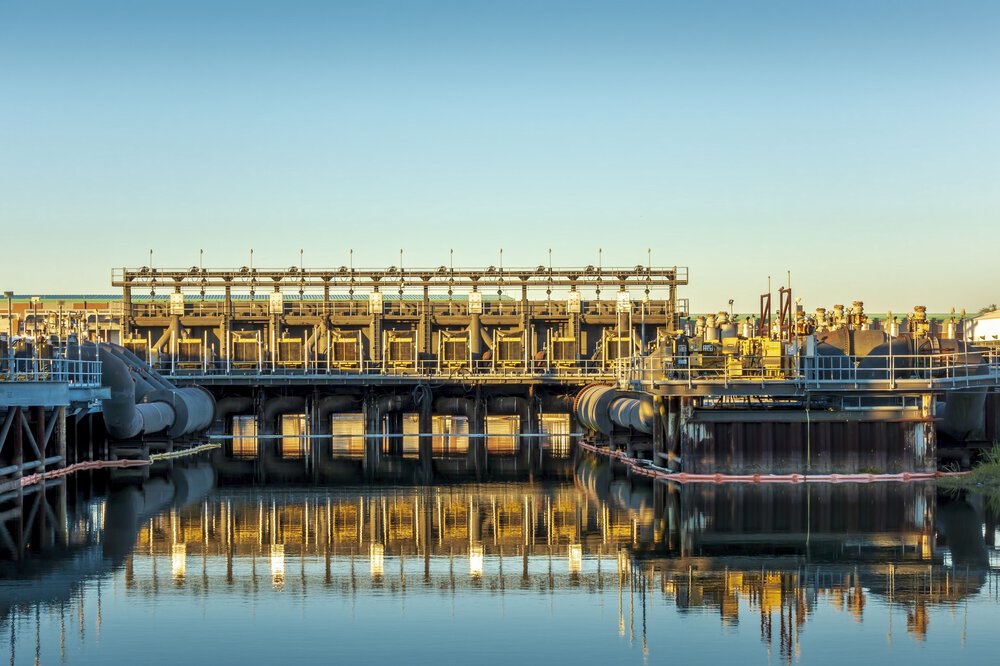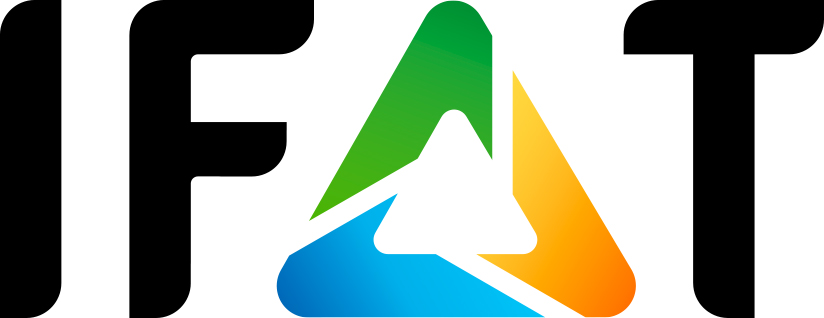The standard of industrial wastewater technology is high, but...
Many wastewater treatment processes used in the industry are now very mature: sewage can be purified to such an extent that it can be reused as process water and recycled. Nevertheless, only just under 40 percent of the European waters are in good condition with regard to their chemical load. This means the technology is used too seldom. So, there's still a lot to do.

Let’s start with the good news: in recent years, there has been a slight decline of most pollutants that major industrial sites discharge directly into water. However, smaller industry locations have emitted more pollutants into the sewer system of municipal sewage treatment plants than in previous years. These are the two key messages of an analysis that the European Environment Agency (EEA) published in March 2019. The report goes back to the latest figures from 2016, based on data from a total of 3,600 industrial sites in Europe. According to the report, coal-fired power stations, coke ovens and chemical plants are the main sources of wastewater pollution. EEA also considers that the following sectors require increased measures to treat industrial wastewater locally: the pulp and paper, steel and metal industries as well as energy supply plants and the non-ferrous metal and chemical industries.
Cocktail effect in waters
In a report published at the beginning of 2019, EEA also pointed out that greater attention must be paid to the cocktail effect of hazardous chemicals in water. This effect means that individual substances—although present in low concentrations—may interact with other low-dose chemicals and thus can become hazardous to health. The consequence:
EEA calls for more reliable data transmission on chemical emissions and improved monitoring of diffuse sources of pollution. This would be important to ensure right classification of pollution and proper adjustment of measures.
This appeal appears to be even more urgent as another EEA report on the condition of European waters from July 2018 states: only 38 percent of Europe’s monitored lakes, rivers and other surface waters are in good condition.
New innovation program in Germany
Further efforts are also needed in Germany to purify industrial wastewater even better and more comprehensively. The Federal Ministry for the Environment, Nature Conservation and Nuclear Safety (BMU) established the new funding priority “Innovative Wastewater Technology.” “We want to pave the way for new eco-friendly technologies and processes in wastewater treatment. Thus, we are protecting the environment and help modernize our operations,” explained Rita Schwarzelühr-Sutter, Parliamentary State Secretary at the BMU when the program was announced at the beginning of October 2018. Operators of municipal and industrial sewage treatment plants were allowed to submit funding proposals until April 15, 2019. A total of €25 million are available. Schwarzelühr-Sutter continues: “The potential is huge: from the recovery of recyclable materials and the reduction of pharmaceutical residue and chemicals in wastewater and sewage sludge to the realignment of energy supply—we want to support innovations in all these areas.”
Considerable savings in water and CO2 consumption possible
Two projects from the environmental innovation program that have already been completed demonstrate the range of possible applications. The plastics manufacturer Covestro from Leverkusen, Germany has developed and put into operation a recycling system for its Uerdingen site that allows saline wastewater to be purified to such an extent that it can be reused as a raw material in electrolysis. The saving in resource consumption is considerable: the recycling of wastewater saves up to 20,000 tons of sodium chloride and 200,000 tons of completely desalinated water each year. Also the benefit for climate protection is quite impressive: the reduction in the use of resources is accompanied by a reduction of 1,000 tons of CO2 equivalents per year.
The glass manufacturer Hecker Glastechnik from Dortmund, Germany was concerned with better treatment of the process water required for cooling diamond tools during glass processing. Thanks to special filters, the company was able to almost completely reduce the freshwater requirement and the volume of sewage, exactly by 19,000 cubic meters. Compared to the previous system, flocculants could also be reduced by more than 90 percent per year, coolants by more than 70 percent. In addition, the tools now work more efficiently, and the cooling water pressure could be significantly reduced. In total, the glass manufacturer now saves 100 megawatt hours of energy per year, which corresponds to around 50 tons less CO2 emissions.
Sludge as energy source
In 2016, together with the French company Veolia Water Solutions & Technologies, the Bavarian private dairy Bechtel built a new wastewater treatment plant for around €13 million. Already at the beginning of the cleaning process, the degree of contamination of the wastewater is reduced by half by separating fats and proteins mechanically and chemically. The wastewater then ends up in four reactor basins where it undergoes a sequential biological purification process: first, agitators thoroughly circulate the sewage. Afterwards, oxygen is added, and bacteria break down the substances in the wastewater biologically. Finally, sludge deposits on the ground. The clear water that develops in the upper part of the basin is fed into the Danube tributary Naab using an approximately 1.8-kilometer long underground pipeline. The sewage sludge produced—30 to 40 tons per day—is transported to surrounding biogas plants, where it is used to generate energy. A material cycle that processes wastewater in an innovative way.
Less sewage, but more fish oil in fish processing
Another IFAT exhibitor offers cleaning processes for the fish processing industry. With its decanter, the GEA Westfalia Separator Group has developed a robust and reliable technology which not only reduces disposal costs but also recovers valuable components. After the wastewater treatment in suitable swimming tanks, the decanters separate all solids from the water and thus ensure a constant solids concentration in the discharge. This solid phase can be used for the production of fish meal. The treated water is returned to the production process or can be discharged into the sea. This type of reuse reduces both the amount of wastewater and the disposal costs; and the increased yield of fish oil and fish meal also increases the efficiency of the entire process.
Excellent membrane process purifies wastewater and recovers salt
Just a few weeks ago, a new membrane process was awarded a coveted prize—the “International Water Association's (IWA) Resource Recovery Cluster: Best Practice Award 2019.” The process was jointly developed by representatives from science and industry as part of the “HighCon—Concentrates from Reclaimed Wastewater" project.” The multi-stage membrane treatment process succeeds in separating inorganic substances such as salts, meaning both the water and the separated materials can be reused—with the positive effect that disposal costs are reduced as well. With the help of salt recovery, the consortium intends to develop a completely closed cycle for industrial wastewater systems. One million liters of industrial wastewater are to be purified and half a ton of salt recovered every day. The process is being tested at various demonstration sites across different industries and is being funded by the Federal Ministry of Education and Research. Companies involved include DEK Deutsche Extrakt Kaffee, MEWA Textil-Service, Clariant Produkte and l'Oréal Produktion Deutschland.
Water recovery in China
In the international context, too, major projects have been initiated only recently. In September 2019, the French environmental group Suez—also an IFAT exhibitor—received an order worth around €1 billion from its joint venture Suez NWS for the centralized wastewater treatment of a chemical park in Dongying, China. Construction works there are expected to be completed by the end of 2020. Thereafter, the joint venture will take over the operation of the plant for a period of 48 years. 40 percent of the treated wastewater is to be made available for reuse by the companies located in the chemical park.
Also in China, Nestlé operates a large plant for the production of baby milk in Qingdao. “Cow's milk is 87 percent water. When dehydrating it to milk powder, we recover huge amounts of it,” says Peter Stokes, Key Account Manager at Veolia Water Technologies, the developer and operator of the plant. Every month, the Qingdao plant produces 16,500 tons of water from milk, which corresponds to an average of 500,000 liters per day. Together with Lagos de Moreno in Mexico and Mossel Bay in South Africa, it is the third Nestlé powder and dairy plant to use the Veolia process. “Under certain production and weather conditions, our plants even produce more water than they consume,” says Peter Stokes. “That's what happened at the Nestlé plant in Mexico, which sold its surplus recycled water to a neighboring plant in 2018.”
There is still much to be done
The selected examples could be supplemented by many others from Vietnam, the Philippines, Ireland or other countries such as Ethiopia. They all prove that there are now many wastewater treatment processes in use worldwide that succeed in purifying industrial wastewater to the point that it is available again for the production process. However, in order to address global water scarcity and improve water quality, further extensive efforts of this kind will be needed. After all, in many places, the industry is considered the second-largest consumer of water—behind agriculture, but well before private consumers.
But why isn't this mature technology used more often? There are many reasons for this. First of all, the costs, because good industrial wastewater technology is still expensive. And then, in many places, environmental laws are also too lax or are not sufficiently observed or monitored.
Will the United Nations’ Sustainable Development Goal 6 “Clean water and sanitation” by 2030 be able to make a difference here? It is to be hoped!
